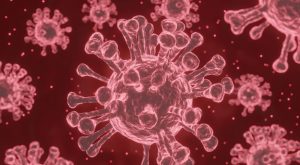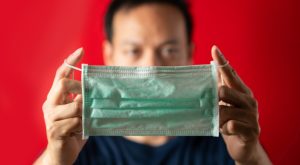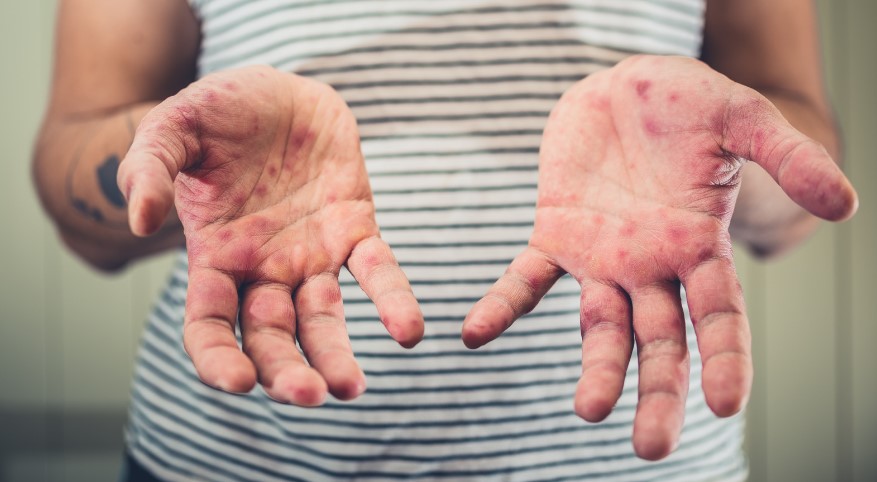Are you feeling a tingling sensation on your skin? Are there painful rashes appearing on one side of your body? If yes, then you might be suffering from shingles. Shingle is a viral infection caused by the varicella-zoster virus (VZV), which also causes chickenpox. It can affect anyone who has had chickenpox before and can cause severe pain and discomfort. In this blog post, we will discuss how shingles develop, its symptoms, and what treatment options are available. So let’s dive in
What are Shingles?

Shingle is a viral infection caused by the same virus that causes chickenpox. The virus remains dormant in the body’s nerve cells until it is reactivated, causing shingles. Those who have never had chickenpox or the vaccine are at risk of contracting shingles. The symptoms of shingles include a painful blistering rash on one side of the body and the associated tingling sensation, which can last for months or even years.
Shingles can be contagious to people who have never had chickenpox or the vaccine. Avoiding contact with vulnerable groups such as pregnant women, newborns, and people with weak immune systems is important. The best way to prevent shingles is by vaccination, which reduces the risk of developing the infection by up to 90%. In short, the shingle is a painful condition that can have long-term effects and can be prevented through vaccination.
What Causes Shingles?

Shingles are caused by the varicella-zoster virus, which is the same virus that causes chickenpox. The virus can remain inactive in the body near the spinal cord after a person recovers from chickenpox. It can reactivate anytime, especially when the immune system is weakened. Shingles is a painful, blistering rash that usually appears on one side of the body. It can lead to serious complications, including blindness, hearing and balance problems, pneumonia, and even death. Although shingles are more common in adults, children can also get it and should see a GP if they experience any symptoms. In some people with shingles, the pain and tingling can continue for months or years after the rash has gone, a condition called post-herpetic neuralgia.
How Do You Get Shingles?

There are a few different ways that someone can get shingles. The most common way is through direct contact with someone with the virus. This can happen when you touch or hug someone who has shingles or when you come in contact with something that they have touched, like a doorknob. You can also get shingles by touching your eyes after touching something with the virus on it.
Another way that you can get shingles is through indirect contact with someone who has the virus. This can happen if you breathe in the same air as someone with shingles or share a drink with them. You can also get shingles this way if you touch something with the virus and then touch your eyes.
The last way that you can get shingles is through contact with an infected animal. This is most likely to happen if you have a pet dog or cat with the virus. You can also get shingles from touching wild animals like raccoons, skunks, and bats. If you think you’ve been in contact with animal health with shingles, wash your hands well and avoid touching your face.
Risk Factors for Getting Shingles

Shingle is a viral infection that causes painful lesions on the skin that are usually accompanied by itching. Although the exact cause of shingles is unknown, risk factors for contracting shingles include age, underlying health conditions, immunodeficiency, and certain medications. Other factors that may increase your risk of developing shingles include exposure to the virus itself (through contact with an infected person or through contaminated material such as food or water), a weakened immune system due to illness or medication use, and underlying emotional stress. If you have any of these risk factors and notice symptoms of shingles, it is important to seek medical attention immediately. You may be prescribed medications to help reduce the pain and itching associated with shingles. Surgery or other therapies may sometimes be necessary to treat damaged nerve tissue.
Diagnosis and Treatment Options for Shingles

If you’re experiencing a rash or blisters on your skin, it’s important to see a doctor right away to determine if you have shingles. Your doctor will likely perform a physical examination and ask about your medical history. They may also order a blood test or take a skin sample (biopsy) to confirm the diagnosis.
Once shingles are diagnosed, there are several treatment options available. Treatment aims to relieve pain and discomfort, speed up healing time, and prevent complications. Treatment options include,
Antiviral medications: These can help reduce pain and heal the rash faster.
Pain relievers: Over-the-counter pain relievers such as ibuprofen or acetaminophen can help ease pain and inflammation.
Topical treatments: Applying calamine lotion or other over-the-counter topical treatments can help soothe the itch and pain of the rash.
Cold compresses: Placing cold compresses on the affected area can help relieve pain.
In some cases, your doctor may prescribe a corticosteroid medication to help reduce inflammation. If the pain is severe, they may also recommend nerve blocks or other types of injections. In rare cases, surgery may be necessary to remove blisters that are causing severe pain.
How to Prevent the Spread of Shingles?

If you have shingles, it is important to take measures to prevent the spread of the virus to others. Shingles are caused by the varicella-zoster virus, which is the same virus that causes chickenpox. The virus can be spread through direct contact with the rash or through contact with respiratory secretions, such as saliva or mucus.
There are a few things you can do to help prevent the spread of shingles,
1. Keep the rash covered – This will help to reduce the risk of direct contact with the rash.
2. Avoid touching or scratching the rash – This can help to prevent further irritation and the potential spreading of the virus.
3. Wash your hands often – This will help to remove any potential contaminants that could be transferred from your hands to another person.
4. Avoid close contact with others – This includes hugging, kissing, or sharing eating utensils or towels.
5. Stay home if you are sick – This will help to prevent giving the virus to others. If you must go out in public, wear a mask to help reduce the risk of spreading the virus through respiratory secretions.
Alternatives to Medication for Treating Shingles

If you’re suffering from shingles, you may be wondering if there are any alternatives to medication for treating the condition. While medication is the most effective way to treat shingles, some alternative treatments may help ease your symptoms.
One alternative treatment for shingles is acupuncture. Acupuncture has been shown to be effective in reducing pain and inflammation. If you’re interested in trying acupuncture, be sure to find a qualified practitioner with experience in treating shingles.
Another alternative treatment for shingles is herbal medicine. Herbal medicines such as lemon balm and ginger have been shown to be effective in reducing pain and inflammation. If you’re interested in trying herbal medicine, be sure to speak with a qualified practitioner who can advise you on the best herbs for treating shingles.
There are also some home remedies that may help to ease your symptoms. One home remedy that’s often recommended for shingles is applying a cool compress to the affected area. This can help to soothe pain and itching. Other home remedies that may help include taking oatmeal baths and using essential oils such as lavender oil or chamomile oil.
If you’re suffering from shingles, talk to your doctor about all of your treatment options. Medication is still the most effective way to treat shingles, but these alternatives may help to ease your symptoms and speed up your recovery.
Conclusion
If you are wondering how you can get shingles, this blog is for you. This post will provide all the information you need about shingles and how to prevent them. We will also discuss the symptoms of shingles and what to do if you experience them. Finally, we will offer some tips on how to treat shingles if they occur. So, whether you are a current or potential shingle victim, read this blog carefully. We hope that by doing so, you will be able to avoid getting shingles in the first place and enjoy a lifetime of healthy skin!









Leave feedback about this